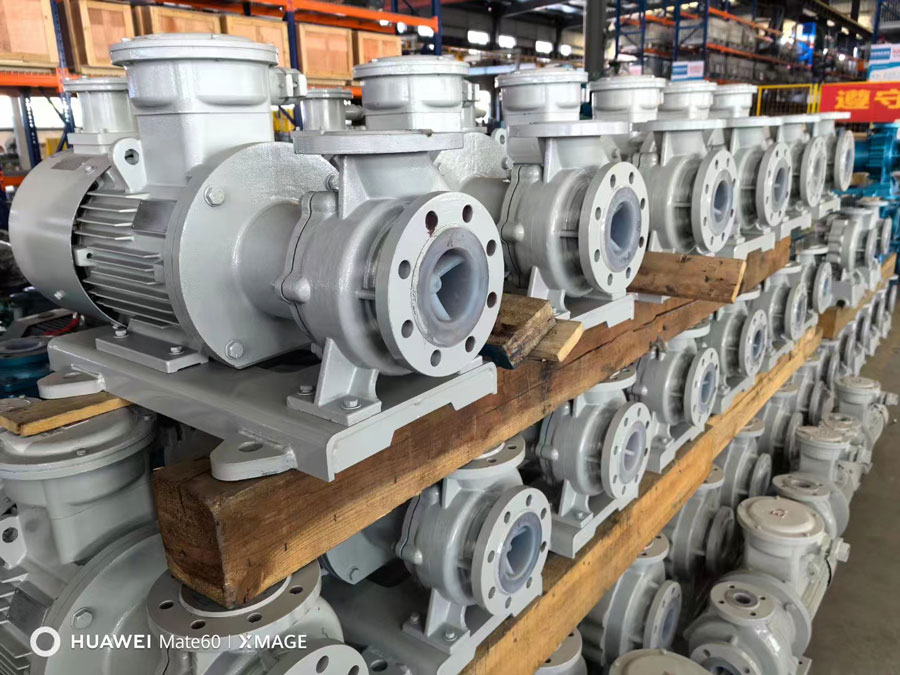TEL: +86 15587495056
fluoroplastic pumps and fluoroplastic alloy pumps

Fluoroplastic pumps and fluoroplastic alloy pumps both play important roles in industrial applications, but there are some significant differences between them. This article will explore the differences between fluoroplastic pumps and fluoroplastic alloy pumps to help users better understand their respective characteristics and applicable scenarios.
1,Material composition
Fluoroplastic pumps: Fluoroplastic pumps are usually made of a single aeroplastic material, such as polytetrafluoroethylene (PTFE) or aeroethylene tetrafluoroethylene copolymer (FEP)
Fluoroplastic alloy pump: Fluoroplastic alloy pump is composed of fluoroplastics and other materials (usually metals) to improve strength and corrosion resistance.
2, Pressure resistance performance
Fluoroplastic pumps: Due to their single material structure, the pressure resistance of fluoroplastic pumps is usually low, making them suitable for general low-pressure applications.
Fluoroplastic alloy pump: Fluoroplastic alloy pumps have higher pressure resistance due to their use of metal composite structures, making them suitable for working environments with higher pressures.
3, Corrosion resistance performance
Fluorine plastic pump: Fluorine plastic itself has excellent corrosion resistance, can resist the erosion of various corrosive media, and is suitable for various chemical processes,
Fluoroplastic alloy pump: Fluoroplastic alloy pumps are not as corrosion-resistant as pure fluoroplastic pumps, but their metal parts can provide additional protection and support, making them suitable for situations where corrosion resistance requirements are not particularly strict.
4, Cost and Maintenance
Fluoroplastic pump: Due to its single material structure, the manufacturing cost of fluoroplastic pump is relatively low, and maintenance is also relatively simple.
Fluoroplastic alloy pump: Fluoroplastic alloy pumps may have higher manufacturing costs due to the use of composite materials, and require more attention and cost investment in maintenance and repair.
In summary, there are significant differences between fluoroplastic pumps and fluoroplastic alloy pumps in terms of material composition, pressure resistance, corrosion resistance, cost, and maintenance. Users should conduct a comprehensive evaluation based on specific process requirements, medium characteristics, and budget considerations when selecting to ensure the most suitable pump type is selected.

